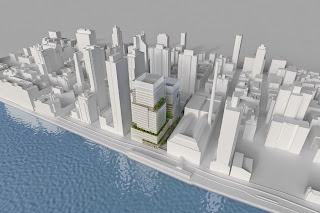The Empire State Development is inviting developers to present offers for leasing or purchasing the land, decking over the yards, then building a sizable residential or mixed-use project on top.
The parcel sits along the Harlem River, just north of the Willis Avenue Bridge. It is currently used as a transfer station to move goods between cross-country trains and trucks that traverse the tristate area—a use the state plans to maintain going forward.
The site is part of a 96-acre area called the Harlem River Yards, which is owned by state Department of Transportation and leased to a private company, which in turn leases out many of the buildings to industrial tenants.
Because the zone is governed by something called a general project plan, the state does not need to get any local approvals to change the zoning—say from manufacturing to residential or retail—which can instead be implemented through a state approval process.
In addition to maintaining the transfer station beneath the deck, the state wants proposals that cover opening access to the waterfront, boosting the local economy and creating affordable housing.
At 12.8 acres, the site is slightly less than half the size of the Hudson Yards development going up over rail yards on Manhattan's west side, and is on par with the scale of a proposal released last year by Bronx Borough President Ruben Diaz Jr.
That plan called for decking over a 13-acre rail yard near Lehman College, between the neighborhoods of Bedford Park and Kingsbridge Heights, farther north in the borough. Diaz predicted such a project could create more than 1,000 apartments.
"New deck construction has the potential to bring transformative development projects to many Bronx neighborhoods," Diaz said in a statement. "I look forward to examining the level of interest this [request] brings to the Harlem River Yards and how that interest could inform future opportunities for platform projects."
Click here to view the PDF
Visit Our Sponsors
Page Views
Since October 1, 2011















